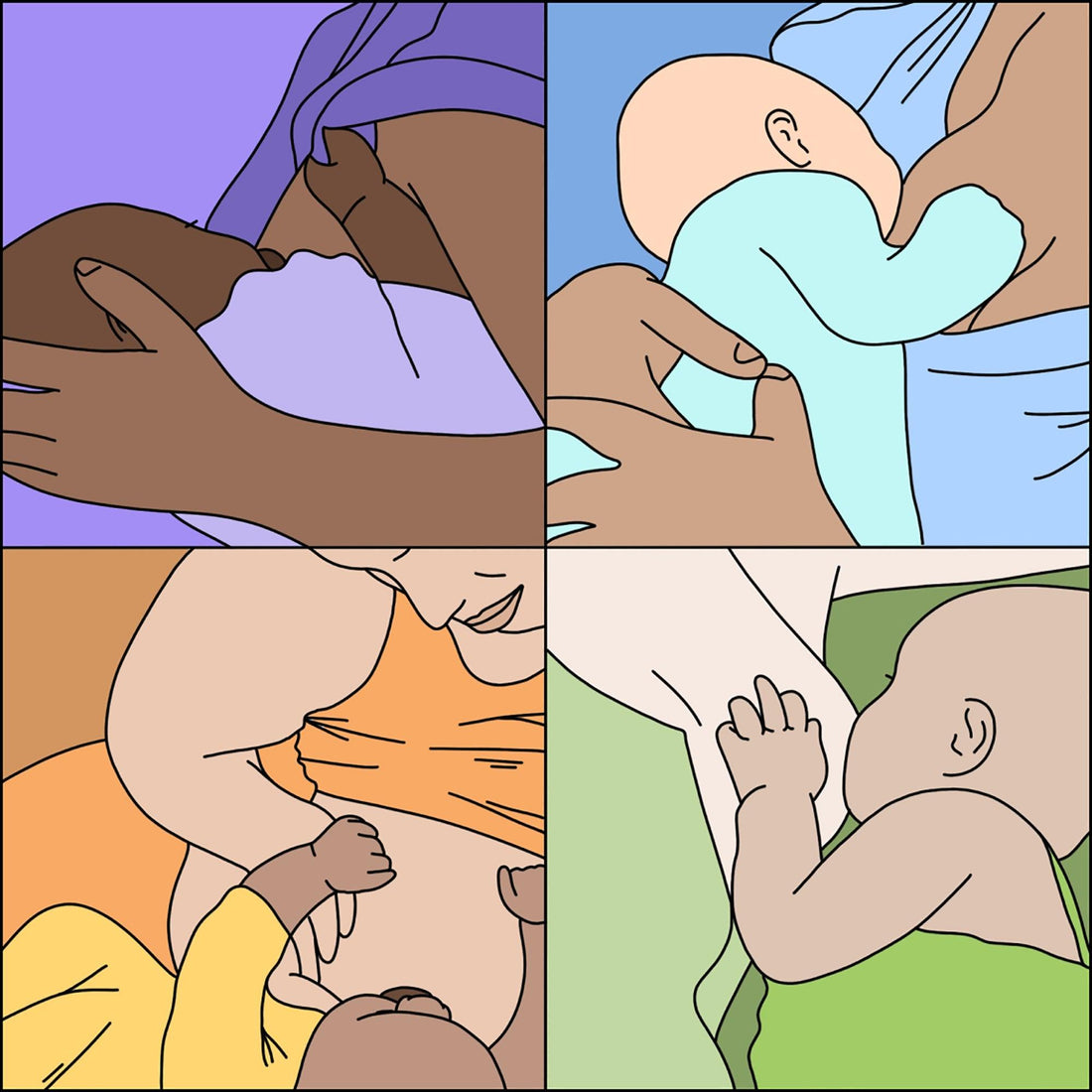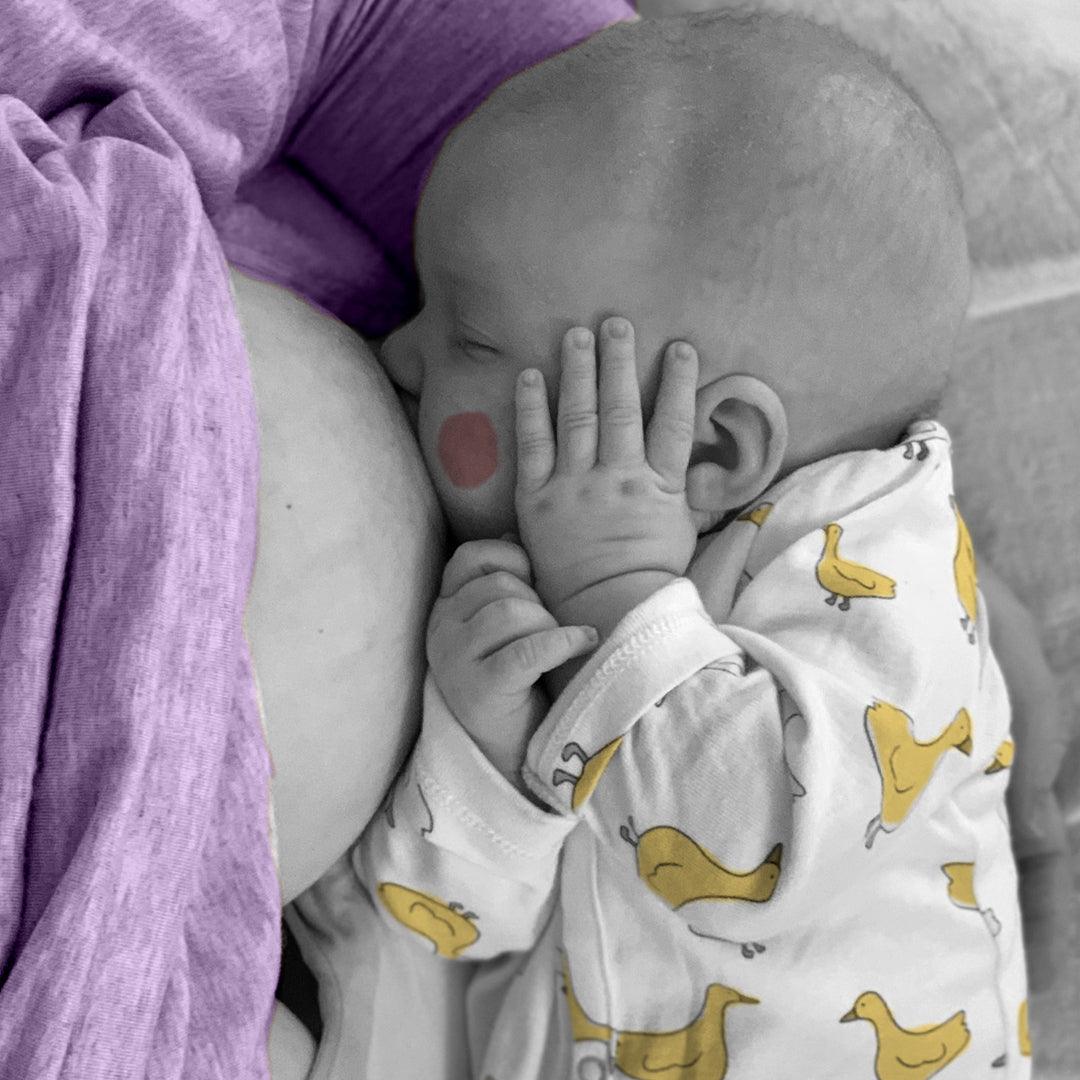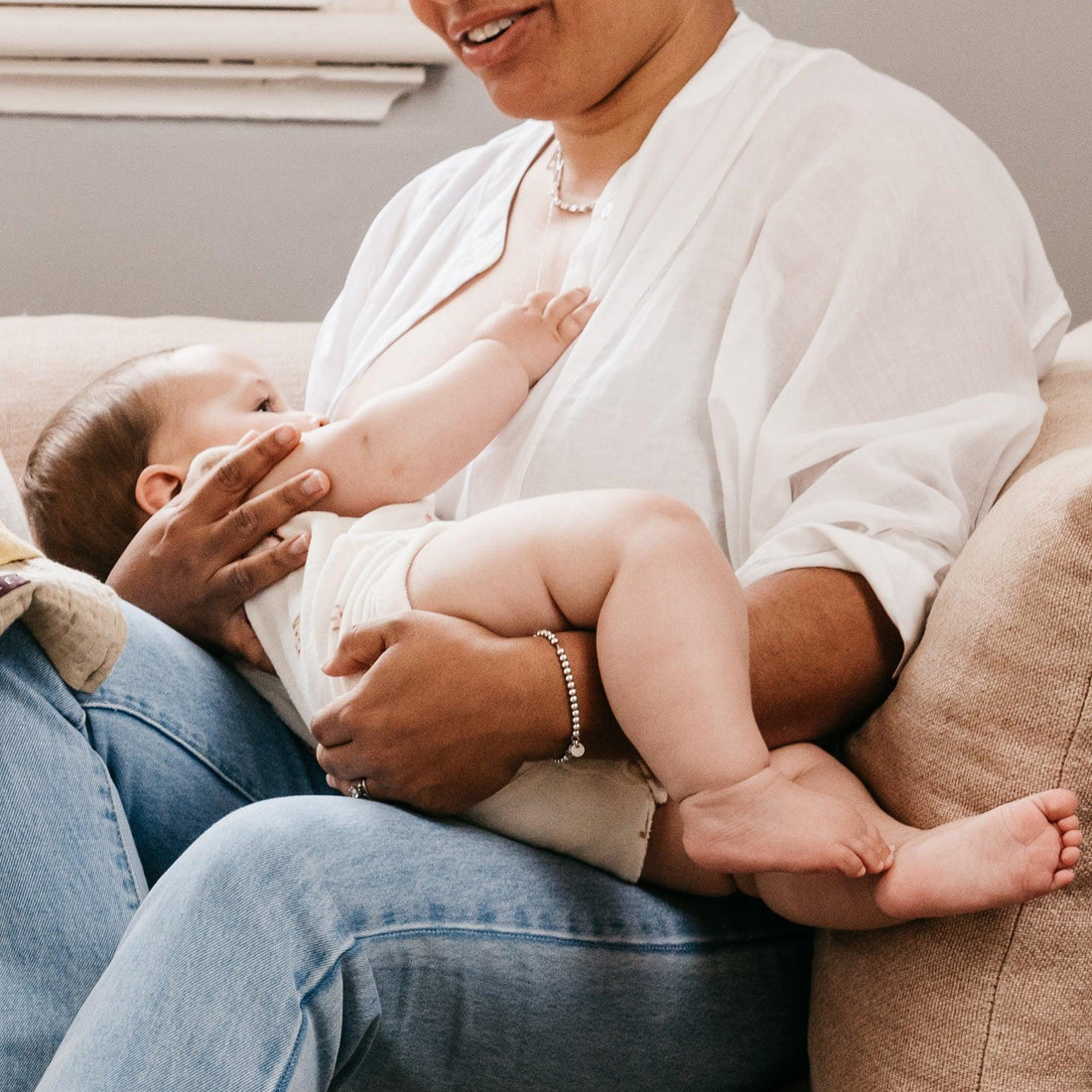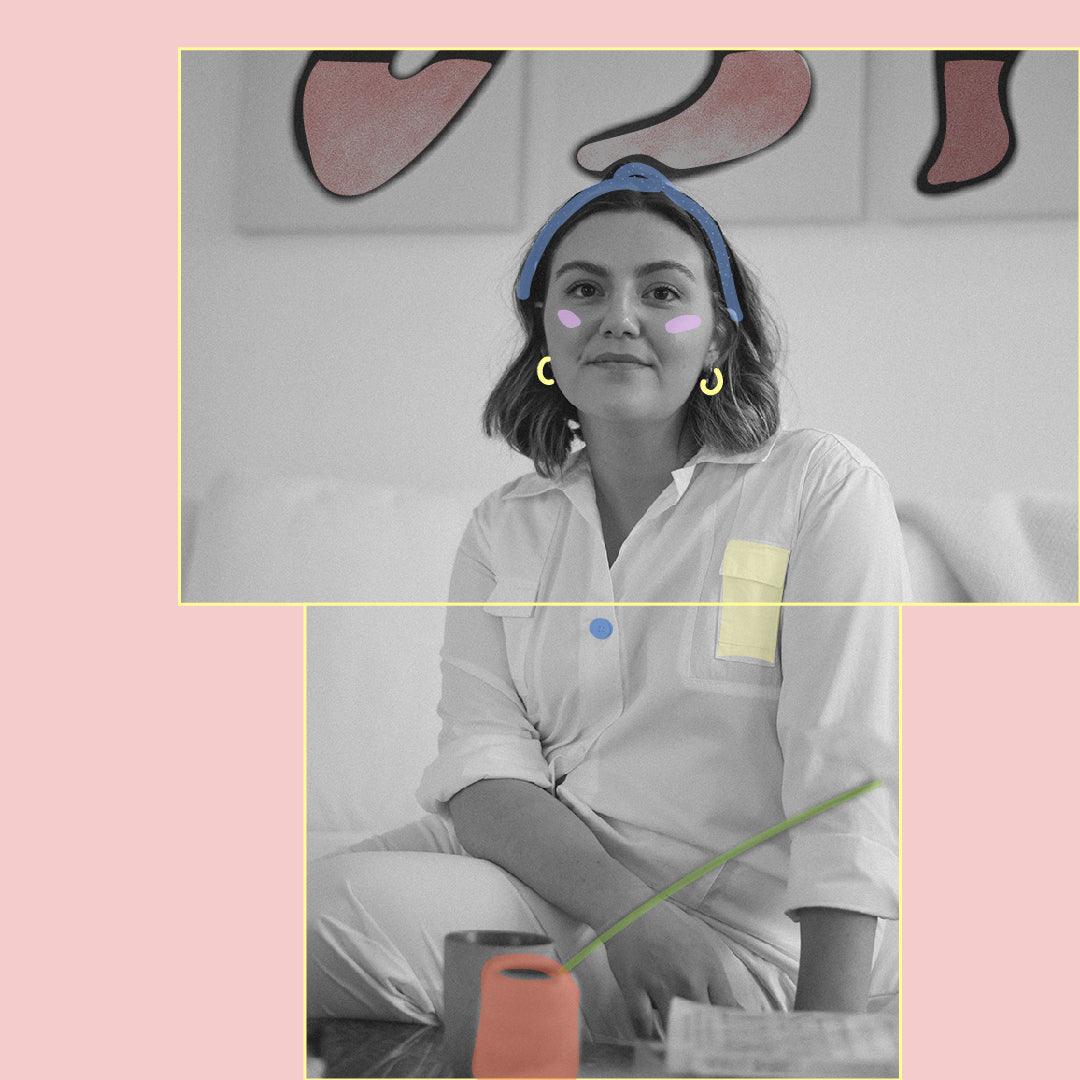Try and see what works best for you (and your back).
Like everything in motherhood, each experience is so profoundly different. The way we feed our kids is so individual. Even when you narrow it into the categories. You breastfeed? OK, what tools support that? Shields? Pumps? Pillows? And what position works best for you?
During my own feeding journey, I learned that how you feed your baby will evolve with your child's growth. What you learn from your midwives in those first few days isn’t necessarily how you’ll be feeding for the course of your journey. Each situation, time of day and environment can call for new and creative positions. From the more traditional cradle feed to the horizontal “It’s 3am and I am still asleep” feed. This is a guide to the feeding positions that may help you work things out, find a new groove, or work around a feeding obstacle, like a sore back.
1. The Cradle Feed
What it looks like: The original breastfeeding position. One that you’ll learn from birth. You sit upright with your baby on their side, the head and neck laying along your forearm and their body against your stomach, in a tummy-to-mummy position. You can most definitely employ a breastfeeding cushion with this position.
Pros: Usually, this feels like the most intuitive position for new mums, it's cosy, and you can get a good read on baby’s sucking from this angle and the whiff of their tiny head.
Considerations: It requires lots of strength and correct posture; as kids get heavy, it can feel cumbersome on your spine, shoulders and neck. Best executed in a supportive chair and a breastfeeding pillow.
2. The Rugby Feed
What it looks like: Think of this like an underarm or clutch position, where your baby rests on your forearm. The baby here will be tucked along your side with their feet towards the back of the chair. This position is suitable for using a breastfeeding pillow and is often one of the first positions you will be shown after birth.
Pros: Less intense on your back with the right amount of angle for mutual gazing. A position was also good as for recovering from a c-section birth.
Considerations: Might not work as your kids get too heavy. Better for newborns.
3. The Sidelay Feed
What it looks like: Kind of like an inverse spooning position. You and your baby need to lie on your sides next to belly-to-belly.
Pros: Those night feeds can feel relentless, so lying enables you both to rest. This shape is excellent for mothers who had c-section births and find it difficult to bear the load of their baby. Also great for mothers with a strong and fast flow as gravity manages the speed.
Considerations: Might not work for smaller-sized breasts.
4. The Horizontal Feed
What it looks like: Precisely as it name implies, you lie flat, and your baby feeds from the side and/or on top of you.
Pros: Great for toddlers who won’t sit still and love to climb on you. It’s comfortable and you can rest simultaneously, so great for those mums recovering from abdominal separation, surgery or just plain exhausted.
Considerations: This one is great for all parts of your journey. .
5. The Dangle Feed
What it looks like: Think of it a bit like setting up for mat pilates, getting onto all fours and then letting your breasts hang. It involves your baby lying on their back while you crouch over them on all fours and dangle your nipple into their mouth.
Pros: Mastitis? This one is great for clearing breast ducts as it works with gravity and if you have to feed multiple babes (twins). Great for toddlers who like to be fed in odd positions due to the inability to sit still.
Considerations: Probably not the most comfortable positions to feed in, so not recommended all the time
6. The Tandem Feed
What it looks like: This is when you are pregnant and feeding your toddler or have given birth and feeding a newborn and your toddler. Gosh, women are just so capable.
Pros: Toddlers have strong sucking reflexes, so if you have engorged breasts, they’ll be able to help empty them quickly
Considerations: It is exhausting feeding and sustaining two babes.
7. The Koala Feed
What it looks like: Like a little cling bear. In this position, your baby sits straddling your thigh or hips, with their spine and head upright as they feed.
Pros: The Koala manoeuvre is a convenient way to feed an older baby (4 months plus) who can sit unaided. It can be done with your baby in a carrier whilst standing up straight and is great for kids who suffer from reflux (the upright angle works nicely for their stomachs).
Considerations: Typically this position works better when their head and neck strength is well established.
8. The Yogi Feed
What it looks like: Downdog, headstand or pincha mayurasanah, the yogi feed is when a toddler feeds off you mid way of a vinyasa flow.
Pros: Just for fun and great for the gram.
Considerations: Not something you’d be doing every day (haha).




















